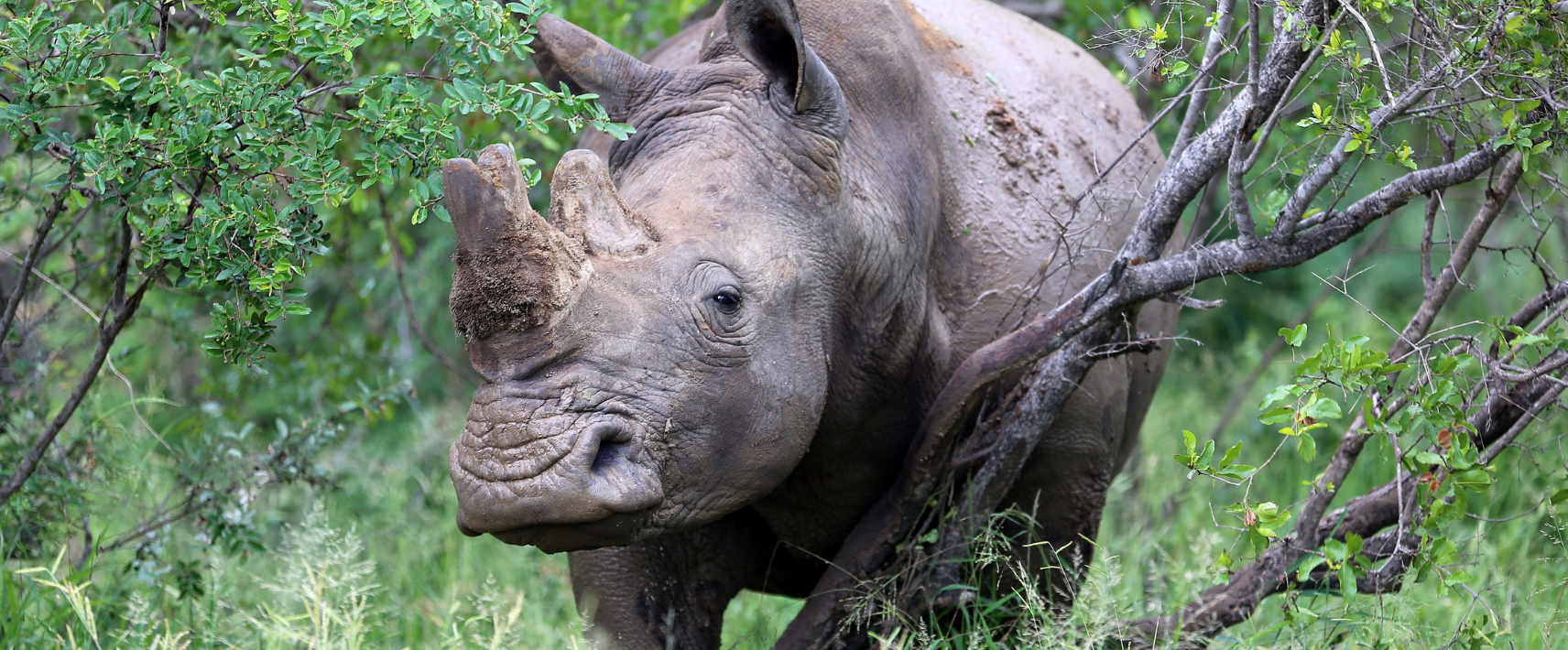One of the most important global meetings on wildlife trade has just wrapped up in Uzbekistan. It’s capital city Samarkand was where governments convened for the 20th Conference of the Parties (CoP20) to the Convention on International Trade in Endangered Species of Wild Fauna and Flora (CITES) to decide how international trade should be managed for some of the world’s most threatened...
Honey bees are not the only bees that can play a significant role in your garden. This World Bee Day, May 20th, take some time to appreciate the incredible types of native bees of Australia, of which there are over 1,600 different species! Native bees are the best type of bees to pollinate native flora and can help maintain their diversity.
Threatened by habitat loss, climate change and pesticide and insecticide use, native bees are at risk of population decline with many species having unknown distributions and being under-researched.
Bee-aware of the different types of native bees and how you can help them
Below are five major types of native bees found around Australia and how you can help encourage their visitation to your home garden by way of native planting. Plus, keep reading to find general tips for conserving native bees and honey bees in your backyard!
1. Stingless bees
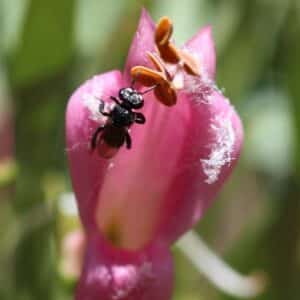
Stingless bee visiting a flower. Image credits: Wildlife Land Trust members Scott and Susan Reilly
That’s right, these are completely stingless bees! Stingless bees live in social hives and produce small quantities of tangy ‘sugarbag’ honey.
Location: Northeastern NSW, Qld, northern WA and NT due to their preference for warm and tropical climates
What they pollinate: Wildflowers and crops such as macadamia, mango, watermelon, lychees
Best native plants to invite them to your garden: Eucalyptus, Angophora, Grevillea, Melaleuca (paperbark), Syzigium (lilly pilly) Leptospermum (tea tree), Callistemon (bottlebrush)
How to conserve them: Small and black in colour (measuring around 4mm!) these bees can be mistaken for flies. So next time you see a swarm, look before you spray!
2. Blue-banded bees
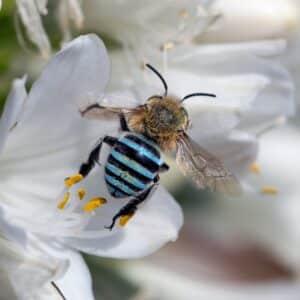
Blue-banded native bee (Amegilla genus)
Blue-banded bees are not only striking but are capable of specialised pollination called buzz pollination where the bee curls their body inside the flower and buzzes, freeing pollen from the capsule. An example of a Wildlife Land Trust sanctuary that provides habitat for blue-banded bees is The Torr.
Location: Mainland Australia (not Tasmania)
What they pollinate: Wildflowers and crops like tomatoes, eggplants, chili, capsicum, and herbs like basil
Best native plants to invite them to your garden: As a long-tongued bee, they are attracted to flowers with tubular slender petals like Correa, Westringia (native rosemary) as well as Melaleuca (paperbark) and Hibbertia.
How to conserve them: You can make a portable nest box for these bees using PVC pipe and soft clay soil!
3. Great carpenter bees
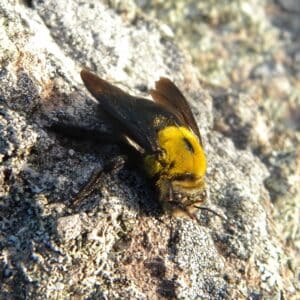
Great carpenter native bee species (Koptortosoma subgenus)
Great Carpenter bees are on the larger end of bees in Australia, measuring 15-24mm long and are also buzz pollinators just like blue-banded bees.
Location: Northern NSW and WA as well as Qld and NT.
What they pollinate: Wildflowers, tomatoes, eggplants, chili, capsicum, kiwi, blueberries, cranberries
Best native plants to invite them to your garden: Eucalyptus, Cassia, Jagera, Senna, Hibbertia, Dianella
How to conserve them: Their common name derives from their ability to cut burrows inside stems and soft timber of decayed wood (e.g. dead limbs of mango trees), so leaving a few rotting logs around can provide them with a place to make their home.
4. Leaf cutter bees
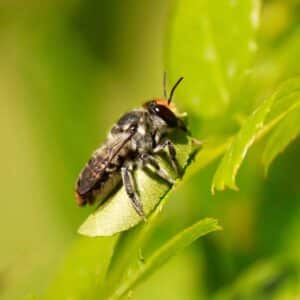
Leaf cutter native bee species (Megachile genus)
Have you ever found neatly cut holes in soft leaved plants? Then you may have had a female leaf cutter bee visit your garden to gather pieces of leaf to line their nest.
Location: Nationwide
What they pollinate: Crops like lucerne and apples
Best native plants to invite them to your garden: Soft, broad leaved plants like Hardenbergia and Kennedia
How to conserve them: Providing nesting locations for these species in the form of dead tree trunks that are higher off the ground, so that nests are protected from ants.
5. Homalictus bees

Bee of Homalictus subgenus, photo credits: Laurence R Sanders
These bees are usually less than 8mm and come in a wide range of jewel shades. The Homalictus bee also has complex underground branching nests.
Location: Nationwide
What they pollinate: Generalist plant pollinator
Best native plants to invite them to your garden: As short, tongued bees they like short compact flowers such as daisies and pigface.
How to conserve them: Keep an area aside in your garden bare and mulch free. Make sure this area is not overwatered and has minimal foot traffic, so that ground nesting bees like the Homalictus can make their homes.
More tips to conserve native bees in your backyard
Plant native trees indigenous to your area.
You can source these from your local nursery to make sure they are specifically native to your area. It is also best to aim for a garden that is diverse, flowers year-round and has many different shaped flowers.
Avoid using broad-spectrum insecticide sprays.
These sprays are indiscriminate and can end up killing beneficial insects like bees and other predatory insects that prey on pests. If you need to apply insecticides you can apply these at night when beneficial pollinators are least active.
Keep a variety of bee habitat, as bees can nest in different areas.
Provide supplementary habitat, such as:
- Bee hotels (for solitary bees)
- Nesting blocks with clay soil (for blue-banded bees)
- Leaving dead trees with hollows (for stingless bees)
- Keeping bare ground that is drained and mulch free (for ground nesting bees).
Member-owned wildlife sanctuaries of HSI Australia’s private land conservation program – the Wildlife Land Trust – sees many of our member-owned wildlife sanctuaries do their bit for bees. Sanctuaries such as Honey’s Refuge and The Torr are helping protect their native bees by conserving their habitat.
But, you don’t have to own a wildlife sanctuary to help different types of bees. By identifying the species visiting your garden and following our tips on how to conserve them, you’ll be well on your way to having a busy backyard in no time!
Cover Image: David Clode

